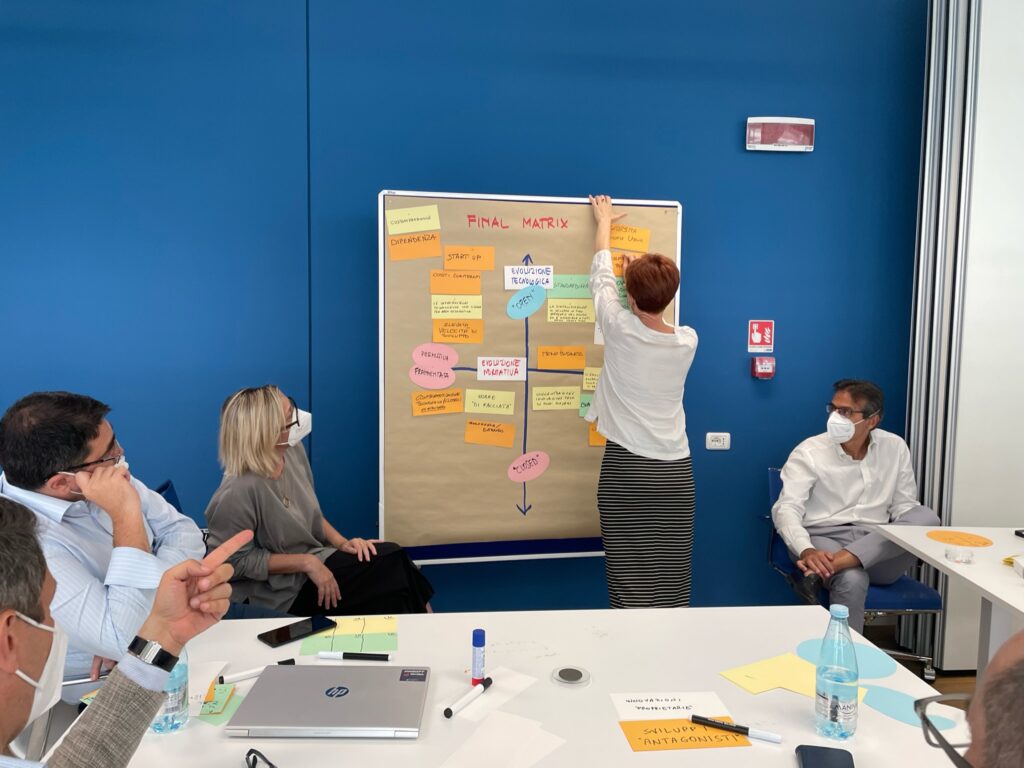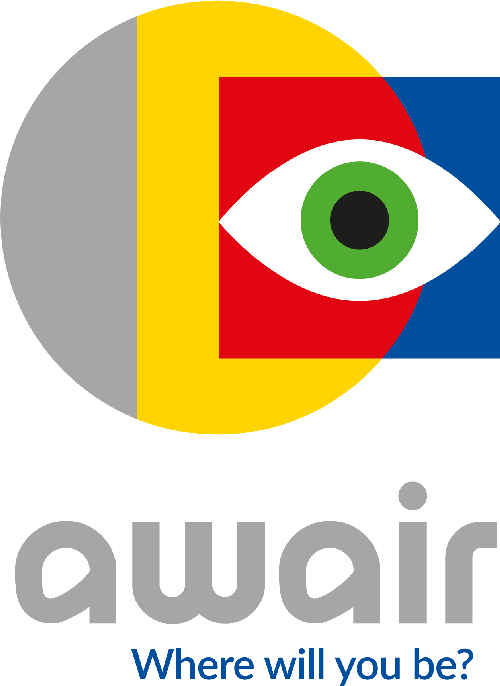
Technology and digital innovations have been the main drivers of business and societal transformation over the past two decades. The speed of transformation shows no sign of abating: it is accelerating with huge impacts in all areas of life. A major challenge for CIOs (Chief Information Officers) in this context is to help business leaders understand the evolution of digital technology and make informed strategic choices, consistent with this evolution. The critical competence to attract the attention of decision-makers and guide their strategic decisions is to be able to build and tell understandable and relevant stories about the evolution of technology and its future impact.
Read this article in Italian here
For the CIO Academy of Aused – Associazione Utilizzatori Sistemi e Tecnologie dell’Informazione (Association of Users of Information Systems and Technologies), Awair grounded a course entitled ‘Imagining Possible Futures’ enabling CIOs to experience the Scenario Planning technique.
Scenarios and the Scenario Planning technique
According to Peter Schwartz’s definition, scenarios are “tools that help us take a long-term perspective in a world full of uncertainty. These techniques describe how the world might change, helping us to adapt to changes in the environment”.
Scenarios have a threefold function:
- They are powerful, data-driven stories about the future that can guide better decisions in the present;
- They offer the possibility to organise and test assumptions about the future, despite complexity and uncertainty;
- They provide an interpretative framework for recognising change and preparing in advance.
Scenarios deal with two worlds: the world of facts and the world of perceptions. They explore facts, but target perceptions in the minds of decision-makers. Their purpose is to gather information of strategic relevance to be transformed into unprecedented perceptions.
– Pierre Wack, Scenarios: The Gentle Art of Perceiving
Scenario Planning is a structured methodology aimed at reducing uncertainty and increasing flexibility, i.e. the ability to make strategic choices that maximise the likelihood of success, whatever the future evolution. With the Scenario Planning technique, the vision is the end point of a journey exploring possible futures; it differs from Strategic Planning, in which a course of action is defined backward starting from a predefined future vision.
Imagining Possible Futures Project
With the project “Imagining Possible Futures”, Alessandra Abbondati and Francesca Antonini of Awair proposed to the professional community of CIOs a guided tour that realistically simulates critical issues, with the aim of developing a key leadership competence: scenario building.

The activity addressed a dozen of AUSED member CIOs, and took place in four two-hour virtual sessions plus one in-person day, sharing concepts and tools in plenary sessions and practicing in sub-group work sessions. The final day was held at the MADE spaces, the i4.0 Competence Centre of the Politecnico di Milano, with the support of the SIDI Group which sponsored the initiative.
Participants proved to be active in their reasoning, curiosity, big-picture thinking, and the art of confrontation and dialogue to engage in macro, forward-looking reasoning. At the same time, scenarios are alternative narratives that organise people, things, and places in configurations that challenge the current order, the official future. This is why an essential part of the training was devoted to how to communicate effectively with stakeholders and corporate decision-makers, experimenting with storytelling techniques to shape the content and make it comprehensible. Because it is very important to train creativity and imagine stories of possible futures, nevertheless it is even more powerful to know how to tell them effectively.
